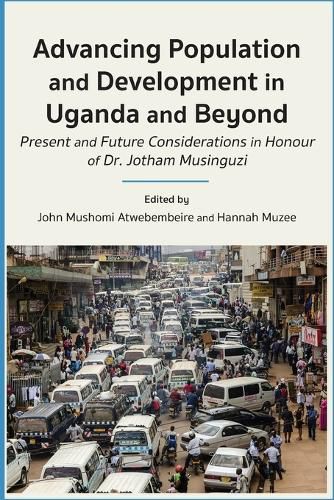Readings Newsletter
Become a Readings Member to make your shopping experience even easier.
Sign in or sign up for free!
You’re not far away from qualifying for FREE standard shipping within Australia
You’ve qualified for FREE standard shipping within Australia
The cart is loading…






This title is printed to order. This book may have been self-published. If so, we cannot guarantee the quality of the content. In the main most books will have gone through the editing process however some may not. We therefore suggest that you be aware of this before ordering this book. If in doubt check either the author or publisher’s details as we are unable to accept any returns unless they are faulty. Please contact us if you have any questions.
This book offers a comprehensive exploration of Uganda's demographic landscape, drawing on perspectives and analytics from selected African countries. It meticulously examines demographic transitions, trends, and the potential for a demographic dividend to foster development. Beginning with Africa's Road to Demographic Transformation, the book underscores the critical importance of African population dynamics and the policies and programmes shaping them within the continent. Its unique contribution lies in its reliance on primary data sources, including interviews, which provide fresh insights, viewpoints, and reflections. This makes the book an invaluable resource for researchers, policymakers, and practitioners engaged with population issues. A central argument of this work is the profound influence of population dynamics on economic, social, and environmental outcomes. It highlights the significant benefits of investing in population, delving into the interconnectedness of population growth, migration, social protection, and urbanisation. Ultimately, the book advocates for advancing population and development in Africa through a deep understanding of demographic trends, challenges, and opportunities, coupled with a commitment to implementing policies and programmes that prioritise the well-being of African populations. The book is structured into three parts: Part One delves into chapters exploring sexual and reproductive health issues across Africa; Part Two focuses specifically on Uganda's context concerning population aging and older persons; and Part Three sheds light on demographic data and service delivery.
$9.00 standard shipping within Australia
FREE standard shipping within Australia for orders over $100.00
Express & International shipping calculated at checkout
This title is printed to order. This book may have been self-published. If so, we cannot guarantee the quality of the content. In the main most books will have gone through the editing process however some may not. We therefore suggest that you be aware of this before ordering this book. If in doubt check either the author or publisher’s details as we are unable to accept any returns unless they are faulty. Please contact us if you have any questions.
This book offers a comprehensive exploration of Uganda's demographic landscape, drawing on perspectives and analytics from selected African countries. It meticulously examines demographic transitions, trends, and the potential for a demographic dividend to foster development. Beginning with Africa's Road to Demographic Transformation, the book underscores the critical importance of African population dynamics and the policies and programmes shaping them within the continent. Its unique contribution lies in its reliance on primary data sources, including interviews, which provide fresh insights, viewpoints, and reflections. This makes the book an invaluable resource for researchers, policymakers, and practitioners engaged with population issues. A central argument of this work is the profound influence of population dynamics on economic, social, and environmental outcomes. It highlights the significant benefits of investing in population, delving into the interconnectedness of population growth, migration, social protection, and urbanisation. Ultimately, the book advocates for advancing population and development in Africa through a deep understanding of demographic trends, challenges, and opportunities, coupled with a commitment to implementing policies and programmes that prioritise the well-being of African populations. The book is structured into three parts: Part One delves into chapters exploring sexual and reproductive health issues across Africa; Part Two focuses specifically on Uganda's context concerning population aging and older persons; and Part Three sheds light on demographic data and service delivery.